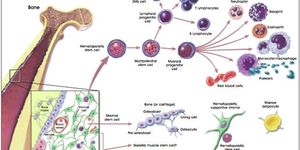The human brain is a complex organ made up of networks of cells and their accompanied proteins, and it directs all the processes in the human body. Charting all the connections and pathways in the brain has been an exciting challenge for brain researchers for a long time.
Now, scientists at the Massachusetts Institute of Technology have developed a methodology that has given them rich detail in viewing the molecular composition of the human brain, and the ability to do so at different scales. Using fluorescence, the resolution they achieved is as high as 60 nanometers, which far exceeds the resolution of light microscopes.
They called their method Magnified Analysis of Proteome and it works by expanding tissue samples (using chemicals) while keeping proteins in the tissue intact down to the nanoscale. The video explains the process, and shows some of the brilliant detail the researchers have captured. Their work has allowed for the accurate imaging of neural connections.
The researchers note that this technique is not limited to the brain, either.








